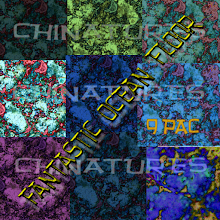Saturday, September 20, 2014
Bird News September 20, 2014
Kestrels have been out in abundance. I usually see one in a tree once or twice a month, but lately I've seen bunches of them on the air currents daily. They are just all over. I saw a particularly handsome one [m, f-- who knows?] sailing over a small farm village today circling in for a landing. The kestrels have a characteristic way of holding their wings when drifting and a particular shape to their wings as well.
Hairys and downies continue to grace the feeders. They like the sunflower kernels and the suet. If there are peanuts, they eat those too. The male hairy checked out our deck one night, working himself along the rails. I figure he was checking for wood bees. They've been much less in evidence since I painted over and taped a couple new wood bee holes. It seems to me like the hairies-- both the male and the female-- spend more time at the feeders than either one of the pair of downies. The downies pretty much seem to grab a few bites and go.
The goldfinches have reverted out of their breeding colors. I can recognize them by their voice now along with how they approach and land at the sunflower kernel feeder. The house sparrows and the goldfinches had a squabble at the feeder one afternoon. One ambitious house sparrow tried to scare one of the hairys off the suet to no avail. The hairy puffed himself up and stood vertical with his wings slightly out from his body. The house sparrow left. The chickadees never seem to fight or squabble with any bird. They remain gregarious as usual and a few buzz me when I am sitting on the deck. One buzzed me the other day as I was filling the feeders.
There have been individual song sparrow, fox sparrow, and chippy [chipping sparrow] this summer but no white-throats or white-heads. Less sparrows in general at the backyard feeders it seems this year. The grackles still come around and several habitually ring the bell near one of the platform feeders. I've discovered that grackles and crows will peck at bits of the pregnant onion plant hanging in a pot on the choke cherry tree. A cedar waxwing flew in one day and ate a cherry before darting off again. Migrating or checking it out, who knows? Some years ago, I did get to witness a line of cedar waxwings passing cherries along. That was kind of neat.
When I throw un-shelled raw peanuts in the garden and in the platform feeder, all of the blue jays in the neighborhood descend upon the yard to carry the peanuts away one by one. A few will crack one open on a nearby tree branch [usually the aspen or the oak] but soon they also carry them away. They hold the un-shelled peanut by one end as they fly off.
Today I tried some sliced [leftover] almonds on the ground. Within a minute, one of the squirrels came dashing along the fence. He dove down the mock cherry tree and into the scattered almonds without hesitation. Maybe he'd had them before. Or maybe squirrels have an acute sense of smell. I don't really know. Another squirrel also came along and promptly began eating the almonds also. A mourning dove toppled out of the cherry tree, acting very startled. I don't know why. It was a younger dove with dark tail and a few outside white underlying feathers. It ignored the squirrels and the almonds and went over to the corn and black sunflower seeds. The two younger blue jays-- and a new third that I didn't recognize-- landed in the tree. They hopped to the ground and quickly ate some of the almonds before flying away again. They also hopped rather than walked along the ground so I suspect that blue jays don't spend a lot of time ground feeding. Walking on the ground is more practical and birds that are habitual ground feeders have evolved to walk rather than hop. Flickers-- and one of the ones in the neighborhood finally dropped in-- are woodpeckers which are evolving to become ground birds. Two chipmunks each took over a platform to munch on the corn and seeds. They did not appear to be interested at all in the almond slices.
At a nearby park the other day with a creek running through it [not the usual park with the creek where I spotted the yellow warbler once] there was a flock of Canada geese. The old dog drank from the water but did not want to go swimming so I didn't make her. Up the creek was a fine great blue heron, some mallards, and some blacks [ducks] or black-mallard crosses. Mallards are notorious for mating with other species of ducks, particularly blacks. The mallards/blacks were dabbling when something I couldn't see must have startled them. They swam en masse to the other shore. A lone duck swam up behind the group, with only his neck and head on the surface of the water. Then he dove and disappeared from my sight totally. I don't think it was a male mallard. (They are dabblers and don't swim underwater much if at all). But I didn't get enough field marks to be able to even guess at the species. A kingfisher determinedly flew up the creek and landed in a treetop to go fishing. We walked up the side of the creek a bit and flushed a solitary muskrat. The muskrat lodge was on the opposite side from where we were. The muskrat set off in that direction but soon went underwater.
The lone red-winged blackbird comes less and less. Perhaps he has finally figured out that he is a red-wing and not a grackle like his grackle buddies.
Subscribe to:
Post Comments (Atom)




No comments:
Post a Comment